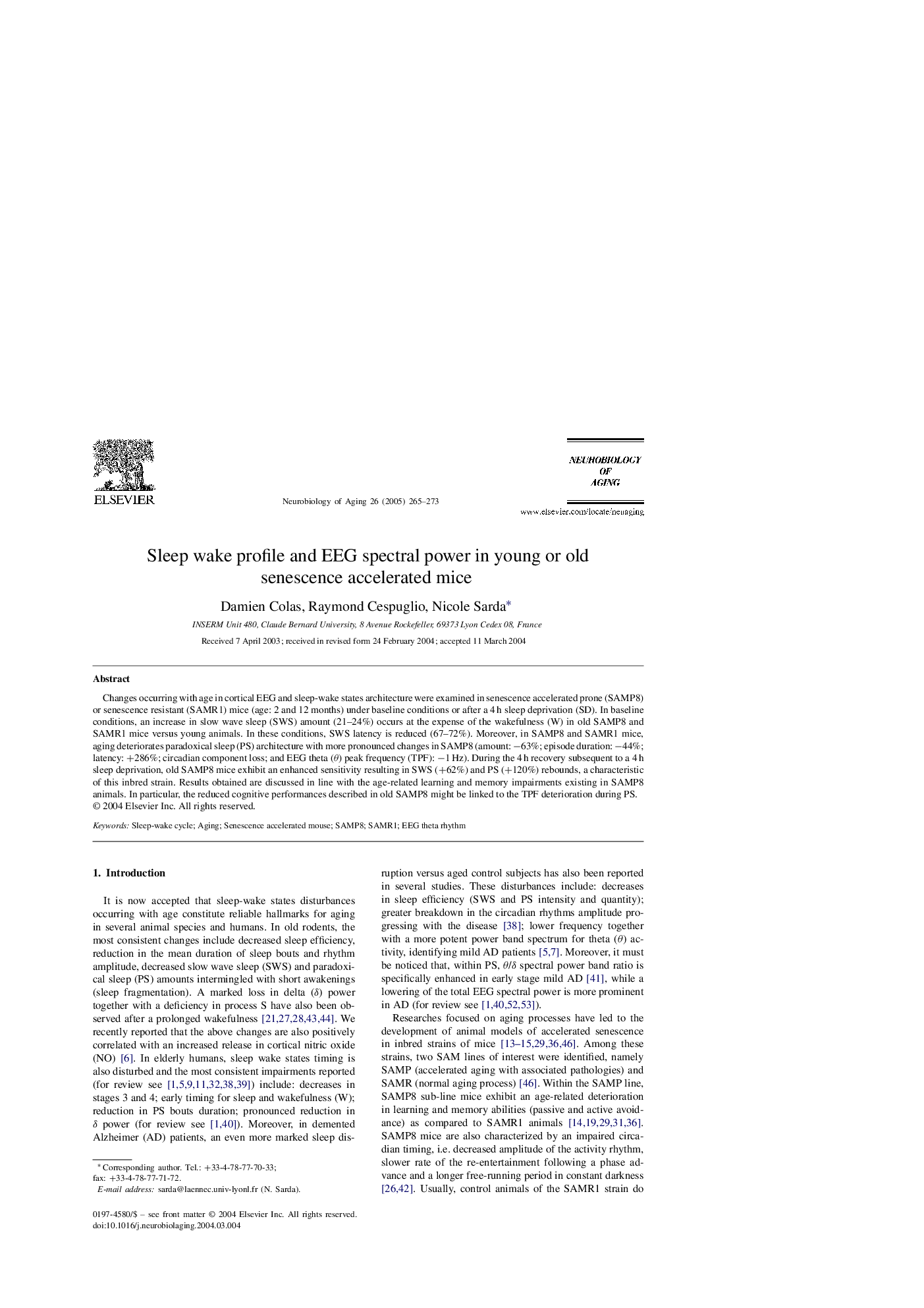| Article ID | Journal | Published Year | Pages | File Type |
|---|---|---|---|---|
| 9645164 | Neurobiology of Aging | 2005 | 9 Pages |
Abstract
Changes occurring with age in cortical EEG and sleep-wake states architecture were examined in senescence accelerated prone (SAMP8) or senescence resistant (SAMR1) mice (age: 2 and 12 months) under baseline conditions or after a 4 h sleep deprivation (SD). In baseline conditions, an increase in slow wave sleep (SWS) amount (21-24%) occurs at the expense of the wakefulness (W) in old SAMP8 and SAMR1 mice versus young animals. In these conditions, SWS latency is reduced (67-72%). Moreover, in SAMP8 and SAMR1 mice, aging deteriorates paradoxical sleep (PS) architecture with more pronounced changes in SAMP8 (amount: â63%; episode duration: â44%; latency: +286%; circadian component loss; and EEG theta (θ) peak frequency (TPF): â1 Hz). During the 4 h recovery subsequent to a 4 h sleep deprivation, old SAMP8 mice exhibit an enhanced sensitivity resulting in SWS (+62%) and PS (+120%) rebounds, a characteristic of this inbred strain. Results obtained are discussed in line with the age-related learning and memory impairments existing in SAMP8 animals. In particular, the reduced cognitive performances described in old SAMP8 might be linked to the TPF deterioration during PS.
Related Topics
Life Sciences
Biochemistry, Genetics and Molecular Biology
Ageing
Authors
Damien Colas, Raymond Cespuglio, Nicole Sarda,
